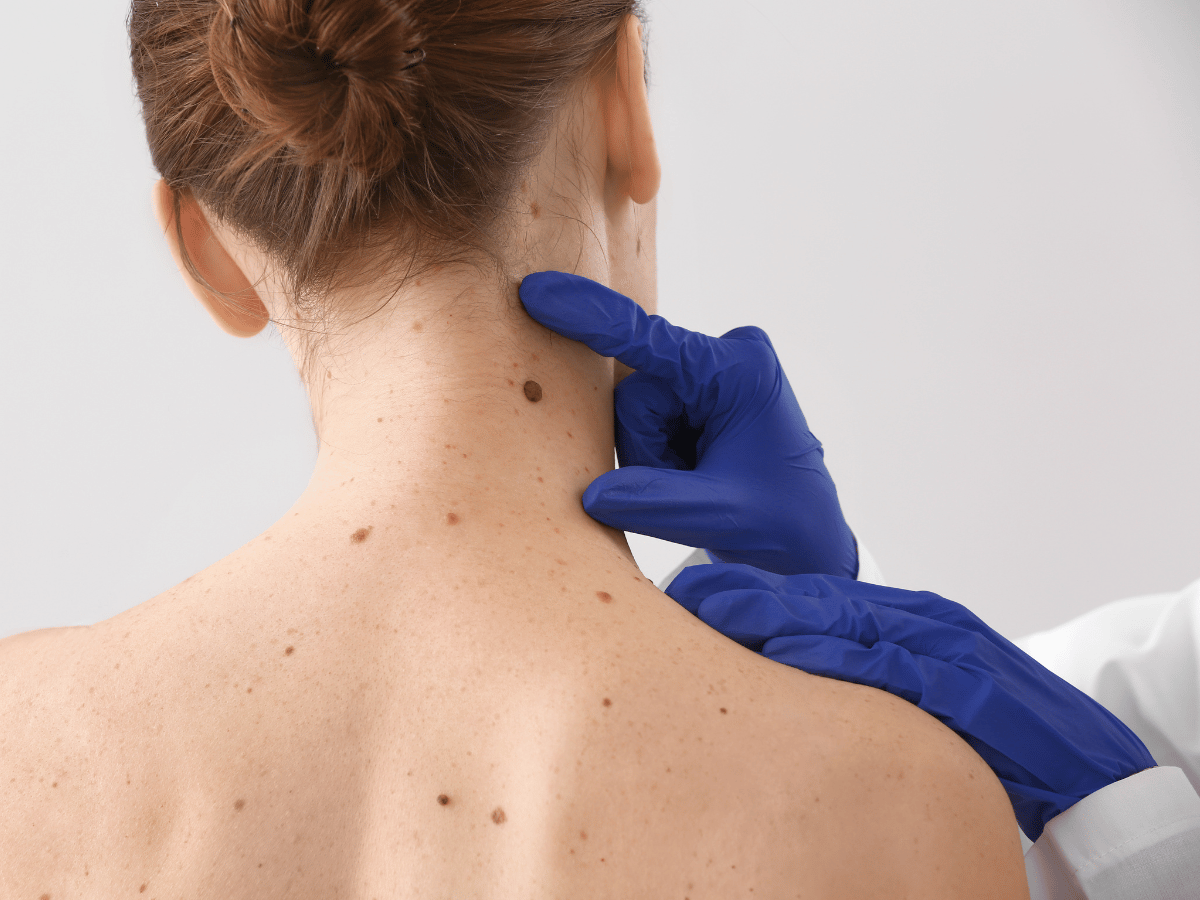What Are Moles?
Moles are common, pigmented growths on the skin. They appear as small, dark brown spots and may be flat or raised. Moles generally appear during childhood and adolescence. Most moles are harmless, or benign growths. Moles are also referred to as Nevi.
CAUSES
Moles are developed when cells that produce pigment, known as melanocytes, grow in clusters or clumps. Melanin is what gives color to your skin.
SYMPTOMS
To be safe, moles exhibiting any of the following warning signs should be examined immediately:
- Larger than six millimeters
- Itches or bleeds
- Rapidly changes in color, size or shape
- Has multiple colors
- Is located where it can’t be easily monitored, such as on the scalp
Depending on their depth, location and color, as well as the patient’s skin type, age and other factors, treatment for benign but unattractive birthmarks may take the form of laser or pulsed light therapy, microdermabrasion or surgical excision.
FAQs
Can you prevent moles or are they hereditary?
Mole development is mostly determined by genes. Some families are more prone to developing them either from birth, or later in life. Preventing moles from developing is, therefore, very difficult. Sun exposure does, however, play a role, and it is thought that excessive exposure to the sun can promote the development of moles. Although sunscreens will be unlikely to completely prevent the development of moles, they are very important in preventing sun damage, which can lead to skin cancers, a far worse problem compared to moles.
Are moles dangerous in any way?
No, true moles are not dangerous. Unless they are irritated or stick to clothing, there isn’t any reason to remove them, outside of cosmetic concerns. The only concern is that moles can resemble melanoma at its early stage, and that melanoma can develop inside the moles. In its early stages, melanoma can resemble the surrounding moles, which can delay diagnosis. Although dermatologists can diagnose melanoma, patients will need to be educated enough to be concerned and visit a dermatologist first.
Should I remove all my moles to be safe?
This is usually not an option that is reasonable, considering the average number of moles that people will have. It is very common for
people to have 30 to 50 moles. Removal requires time, money, and will often leave minor scarring. Melanomas are dangerous and we
would all do well to watch out for warning signs, but there is no need to be paranoid about them. Checking your moles with a mirror or
having a partner check your moles once a month would greatly reduce the risk of missing a melanoma until it has grown dangerous.
Are there any risks involved in mole removal?
Mole removal procedures are generally safe procedures. As with any surgical procedure, some amount of scarring is to be expected, as are minor pain and redness. These are to be expected. In terms of unwanted side-effects, infections and allergic reactions to the anesthetic is a possible risk although these are both rather remote possibilities.
Visit Raleigh Dermatology
Our team provides thoughtful, expert care for all your skin health needs. We are proud to offer the most advanced general, surgical, and cosmetic dermatological services in Raleigh.

